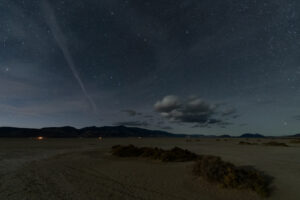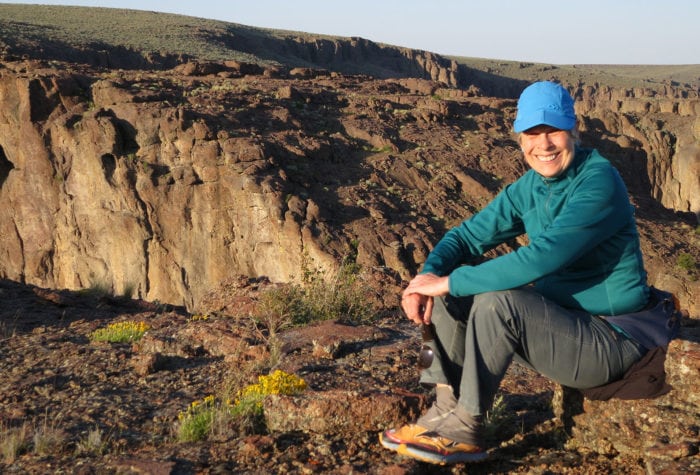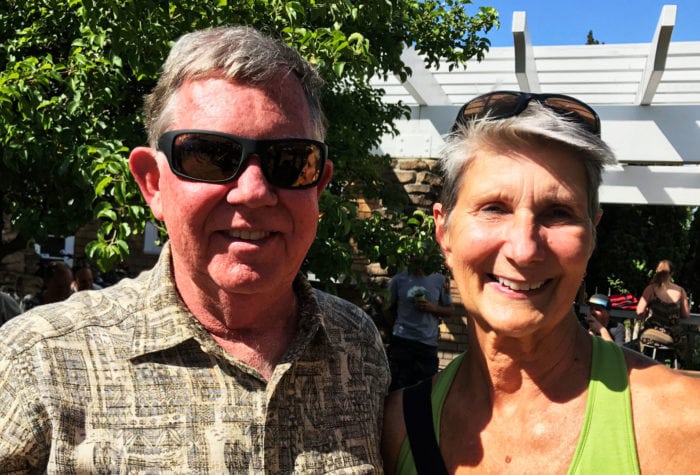Author: Renee Schiavone | Published: March 15, 2024 | Category: Where-To
This article originally appeared in The Bulletin on March 14, 2024.
Appreciate the high desert’s dark skies
It’s no revelation that living in Bend comes with remarkable access to nature and with it, exceptionally clear skies. One can step out their front door into networks of trails by day and look out their window to see starry skies by night.
With so much so close to home, we often lose sight of the reality that there are in fact greater, more remote landscapes to explore not much farther away. There are secluded hot springs, rugged canyons, pristine wildlife areas — and world-class dark skies.
When examining a map of light pollution across the United States, Oregon’s southeastern quadrant is one of very few places in the country where pollution from light is absent today. Paired with the number of extraordinary landscapes found in this part of the state, the opportunities for stargazing are extensive. In fact, 2.5 million acres of southeastern Oregon’s high desert was named the largest Dark Skies Sanctuary in the world this week — a designation for visual quality and remoteness. Officially named the Oregon Outback International Dark Sky Sanctuary, the region is the largest recognized stargazing sanctuary in the world.
Follow this guide to stargazing in Oregon’s high desert for where to begin.
Hart Mountain National Antelope Refuge
Oregon’s darkest-sky site, and a location included in the newly recognized Oregon Outback International Dark Sky Sanctuary, the refuge provides novel viewing opportunities both by night and day. Spend your days seeking out the area’s stunning wildlife before settling in for an evening taking in Hart Mountain’s cosmic delights. Any time of year is a good time to visit Hart Mountain. The Refuge is a desert oasis, with snow melt and springs feeding creeks that attract hundreds of species of wildlife year-round. It’s an important conservation area for species like pronghorn, sage grouse, California bighorn sheep, redband trout and more. A natural hot spring provides a soothing retreat for visitors to stargaze from at night.
Alvord Desert
If the playa of Alvord Desert is dry, it can set the scene for a grand evening of stargazing. One of the darkest night skies left in the country, it’s also one of the most awe-inspiring landscapes in the High Desert. Cracked earth patterns the 80-square-mile dry lakebed, the 50-mile-long Steens Mountain towering above it and the easy-to-access Alvord Hot Springs sitting beside it. Just four hours from Bend, short winter days leave more time for stargazing at this year-round locale.

Summer Lake
With the 3,000-foot Winter Ridge as your backdrop, the Summer Lake region of southeastern Oregon provides several excellent star-viewing vicinities. If you’re interested in a stunning backdrop, the 15-mile-long shallow alkali lake is peaceful and secluded. If you’re looking to gain some elevation, consider hiking up to Diablo Rim to get a better look at our solar system. It’s most advisable to hike this area in the winter season, as summers are hot and little snowpack means dry conditions. If relaxing is on your agenda, enjoying the stars from an outdoor tub at Summer Lake Hot Springs may be more your speed.
Leslie Gulch Canyon
This geological wonderland is nestled in the northeast corner of Oregon’s Owyhee Canyonlands. The 15-mile Leslie Gulch Road is an unpaved route lined by rock spires and honeycombed walls. If you follow it all the way, you’ll reach the riverside Slocum Creek Campground amongst one of the most remote landscapes in the country. Sitting at the base of Leslie Gulch and alongside the Owyhee River, the spot offers a home base to spot an abundance of wildlife and conquer impressive hikes by day. When the sun goes down, stars fill the night sky in less than an hour following sunset. It’s a rare sight to see, with no light pollution in this far-flung corner of the state to obscure your view.
Ongoing conservation campaigns aiming to protect High Desert landscapes like these will limit light pollution and ensure Oregon’s darkest night skies are available to all to enjoy, now and always. Consider learning more about dark desert skies and what we can do to protect them. The answer to preservation lies in changing the way we think and interact with the night in order to decrease light pollution.
—Renee Schiavone is the Communications Manager at Oregon Natural Desert Association, a nonprofit that protects and restores Oregon’s high desert public lands and waters. Read more of her work at onda.org/author/rschiavone.


